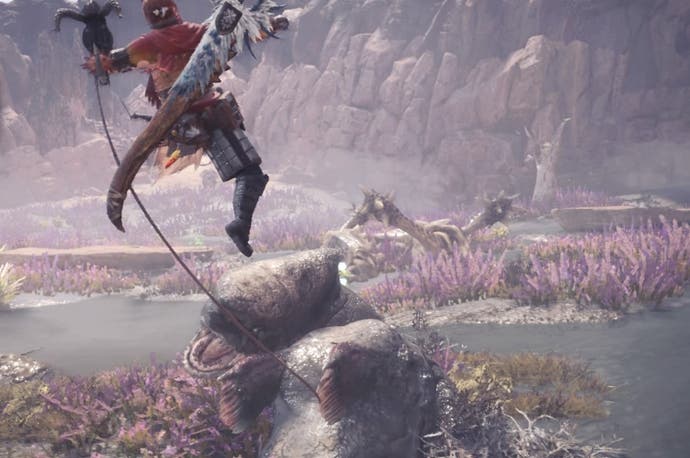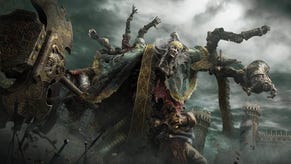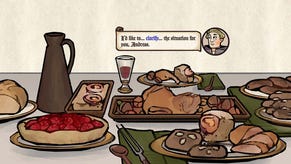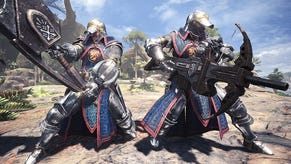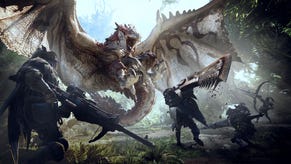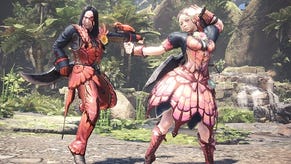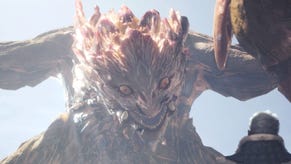Monster Hunter World mounting: How to mount a monster and increase your chances of mounting
The various methods and mechanics behind mounting in Monster Hunter World.
Monster Hunter World mounts is one of the game's more advanced combat manoeuvres. It can be extremely useful during tougher fights, so it's well worth taking the time to learn.
As well as this article, we also have Monster Hunter World tips which can help you decide when to farm, what to forage and what to do between hunts, and our Monster Hunter World walkthrough and guide can help with main quest and story progress.
How to mount a monster in Monster Hunter World
Mounting is essentially the art of getting onto a monster's back and doing enough damage to knock it over. Generally speaking, a mounted rider's individual attacks won't do much - if any - damage, but a successful mount will end with the chance to perform a charged attack.
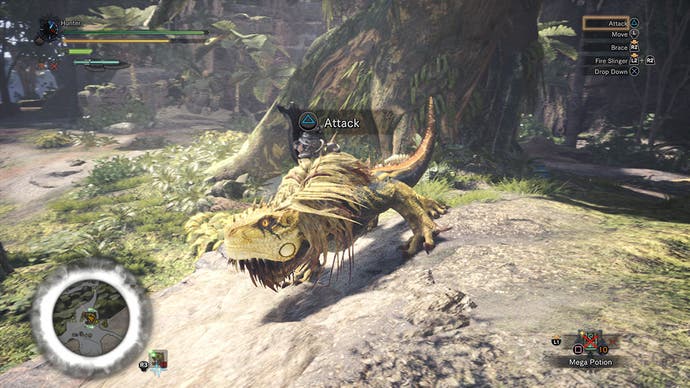
Not only will this do significant damage to the area currently being ridden (extremely handy if you're trying to break a specific body part to collect a particular material), it will stun the monster, giving the entire hunting party the chance to pile on additional strikes unhindered.
How to mount a monster
To mount a creature, you need to strike it with your weapon while you're in the air. This is a two-step process: first, you need to physically get above the monster, and secondly, you need to successfully time your attack to connect with its body as you leap toward it.
To break this down, you must:
- Find a way to launch yourself into the air (by running off a high ledge, for instance)
- Attack the monster's body, head, or tail while airborne (weapon dependent, but Circle / B, Triangle / Y or the right trigger)
- If successful, you will initiate a mount
Bear in mind that different monsters have different resistances to mounted attacks, so don't be discouraged if your first attempt doesn't immediately succeed - even if your launch and timing seem impeccable.

It's worth persevering though: there's a hidden gauge tied to each monster that gradually fills whenever your airborne strike connects. Once full (which could take one or multiple attempts, depending on the monster - and will take longer while using the Insect Glaive), you're guaranteed a successful mount.
Also be aware of diminishing returns: a monster's resistance to mounting increases every time you perform a successful mount during a hunt or expedition - so spamming a mounted attack on the same creature isn't a valid tactic for long. After even as few as two successful mounts, you might find it extremely difficult to initiate another.
Similarly, weapons such as the Insect Glaive, which are capable of dealing damage to a creature during a mount, will do significantly less damage on subsequent mounts.
How to find higher ground and begin a mount
To get above a creature in order to attempt a mount, you've two options.
Most hunters will need to use the environment to reach a higher vantage point. However, some weapons - namely Insect Glaives and Bows - feature attacks capable of launching you into the air from the ground. See below for more on using these weapons for mounting.
While in the air, strike a monster as usual to initiate a mount.

Those hunters relying on the environment to get airborne before attacking can:
- Hang onto a wall face and spring off
- Run up certain walls and leap away to attack
- Use the grappling hook to hoist up toward grapple-able overhangs
- Slide down a hill and hurl themselves at a target
- Swing on a tree vine and leap toward the monster at the optimum moment
- Find higher ground - a ledge or elevation - and run off
Depending on the monster, it mightn't require much height to initiate a mount at all.

You may need to lure a creature toward your higher vantage point before initiating a mount. If you're in a team, it's a good idea to divvy up the duties here; one player should act as the lure, guiding the monster to an agreed point on the map, as the others continue to pile on the damage. The mounter, meanwhile, should get into position, ready to pounce.
What to do once you've mounted a monster
Once you've successfully initiated a mount, and are on top of a monster, there are two parts to the rodeo sequence: attack and defence.
To attack the creature, simply spam Triangle / Y as shown on-screen. You can shift your position using the movement stick to focus your attacks on a specific area of a monster's body - handy if you're trying to break a certain part, such as the head or tail, to collect a specific reward for use at the smithy.

Watch out though: at regular intervals, the monster will attempt to buck you off - you can tell it's about to start bucking when the mini-map turns red.

Here, you'll need to hold the right bumper to brace and stop yourself from being thrown off. You might also need to shift to a different part of a creature's body if it starts trying to smash you into the scenery. Once the bucking subsides, it's safe to resume your strike.
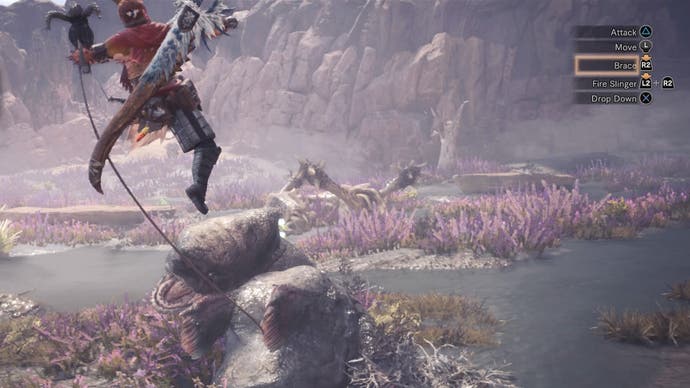
If you mistime a brace and get thrown off, you've a small window in which to hit Triangle / Y to fire your grappling hook. If you're quick enough, you'll hoist yourself back on, ready to continue the rodeo. If you mess up completely, or run out of stamina, you'll dismount.
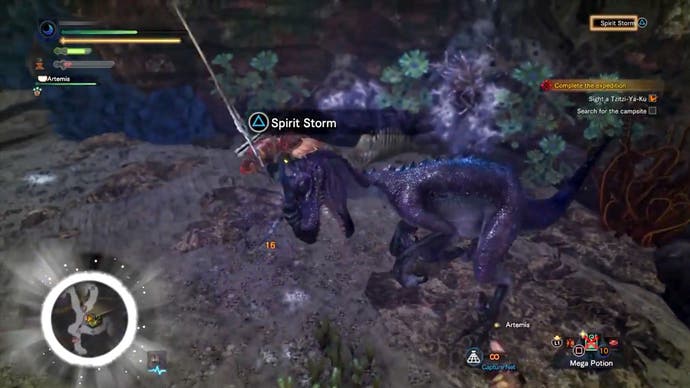
If all goes well, and sufficient damage is dealt during the attack stage, you'll get the opportunity to launch a final, powerful charged attack. Follow the prompt successfully and two things will happen: you'll deal significant damage to the area, and the creature will collapse on the ground, giving you and your teammates time to attack unhindered.
Other ways to mount in Monster Hunter World
Certain hunters won't need to find higher ground in order to begin a mounting attempt.
This is because a handful of weapons - namely, the Insect Glaive and Bow - have a built in 'vault' move that enables hunters spring into the air from the ground, ready to launch a pre-mount strike. Once a mid-air attack connects, the mounting sequence will unfold as usual.
Mounting with the Insect Glaive
The Insect Glaive is one of the most effective weapons in terms of ease-of-mounting, purely because its vault move negates the need to find higher ground first.
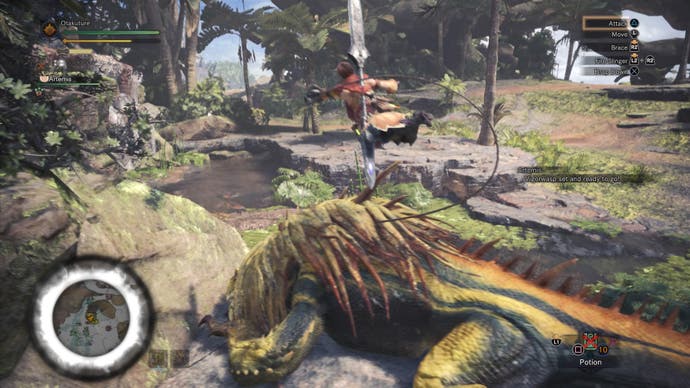
Additionally, it's one of the few weapons that can perform above-negligible damage to a creature during a mount. To get into the air using the Insect Glaive, simply perform the R2 + Cross / X move with your weapon drawn.
As always, attack a creature while airborne to begin the mounting process for real.
Mounting with the Bow
Less well known is the fact that the Bow can also be used to initiate a mounting attack without needing to reach a higher vantage point first.
To start a mount from the ground, draw your weapon then begin a Charging Sidestep followed by a Lunging Melee Attack (that's L2 + Cross / X followed by triangle toward the end of the charge). If you're struggling with the timing, don't forget that you can speak to the Palico in your house to practice at the training area.

This move doesn't actually get you very far off the ground but it's still sufficient to begin the mounting sequence, provided that your attack connects while airborne.
Mounting with the Glider Mantle
Once you've completed the first story expedition in the Coral Highlands, you'll receive the Glider Mantle. Equip this cloak-like item and you'll gain the ability to drift slowly downwards, parachute-like, whenever you launch yourself off a high vantage point.
This makes it much easier to position yourself for a mounting attempt as you approach a monster, and offers a slightly longer window in which to initiate the first mounting strike too.
However, hunters who've become proficient at using the standard methods of mounting might choose to ignore the Glider Mantle altogether.
Skilled mounters will likely prefer to use their single mantle slot to equip other, notably more beneficial ones, such as the Rocksteady Mantle - which can prevent wind attack knockbacks, and stop stuns and staggers caused by monster roars and tremors.
Lobbing your teammates
In the mood for something a little flashier? Advanced (or at least, more adventurous) hunters can initiate a mount by getting a hunter friend to launch them into the air first. To launch another hunter skyward, simply run at them with an axe or hammer and strike them with a heavy blow. Just make sure they don't forget to hit their target on the way down.
It's extremely satisfying - not to mention hilarious - when done correctly, but is definitely one of the trickier ways to start a mount. Its success relies almost entirely on the accuracy, angle, and trajectory of the launcher's aim, but it's a fun trust-building exercise if nothing else.
